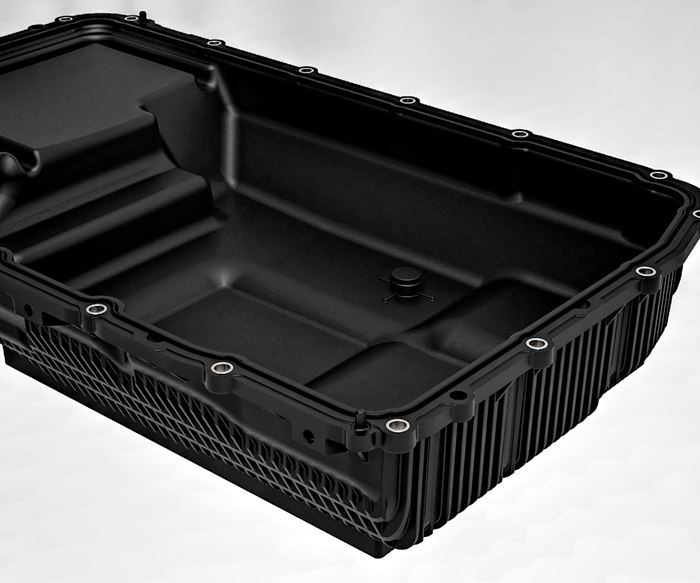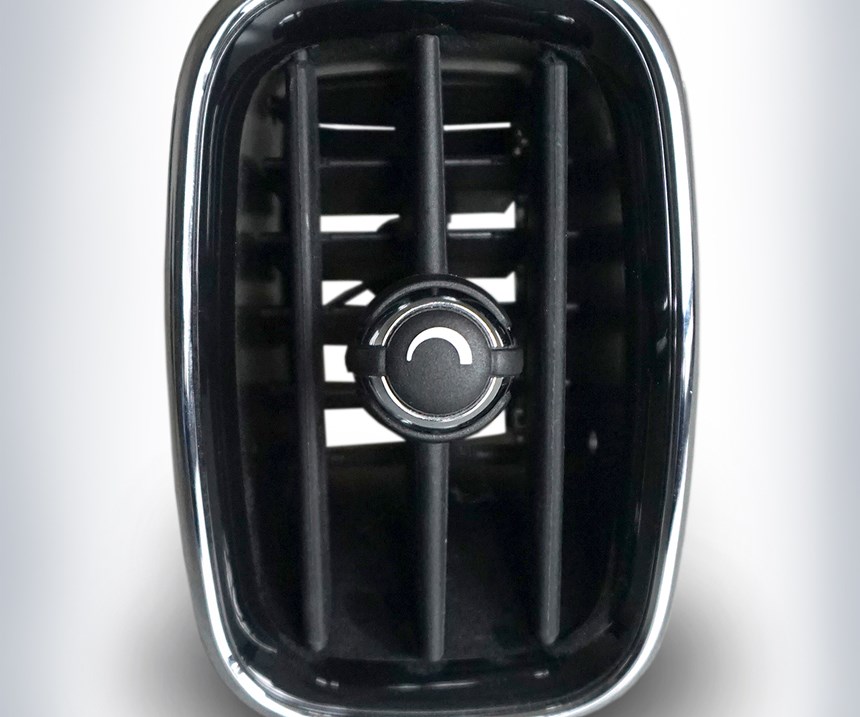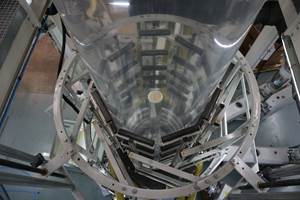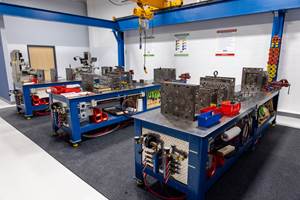Is a New Crop of Processors Emerging with More Materials Know-How?
Recent graduates of plastics education programs appear to be closing a longstanding gap in processors' contributions to materials selection for applications.
Within the last few decades as the demands on plastics’ performance properties and processing behavior have grown ever more challenging, the role of knowledgeable materials selection and associated technical support has swung from the resin suppliers to molders and then increasingly to OEMs and brand owners. This has created a gap when it comes to expectations between molder and OEM/brand owner when it comes to the material-selection portion of a project. Plastics Technology has investigated these trends and identified what appears to be an emerging counter-trend that could help bridge the knowledge gap regarding plastics materials.
We were fortunate to interview two plastics industry veterans with an over 80 years’ combined experience in materials selection and processing. One, is well-known PT columnist Michael Sepe, an independent materials and processing consultant who assists clients throughout North America, Europe, and Asia with material selection, designing for manufacturability, process optimization, troubleshooting, and failure analysis. The other, is Bob Findlen, now director of sales & marketing at distributor of resins and compounds, PolySource. Although categorized as a “resin distributor,” the company differentiates itself based on its technical expertise in application development. According to Findlen, PolySource hires field people with technical backgrounds.
WHO’S BRIDGING THE GAP?
Materials distributors, compounders, independent consultants, OEMs that have materials experts, and now some molders appear to be stepping in to help fill the gap in materials-selection know-how. Says Findlen, “For many years, the major resin suppliers offered many different technical services, from design and processing to testing and regulatory information. As these suppliers later moved to the distribution model: They no longer offered these services unless a customer was buying direct from them. Even then, the services are limited and not what they used to be.”
For a time, some molders had filled in the gap by employing materials specialists; but as these experts began retiring, they were not replaced. Both Findlen and Sepe note that many molders today still get their materials information from the suppliers and trade magazines. According to Sepe, most molders have avoided the materials-selection process due to both an in-house lack of materials knowledge and also to concern about potential for liability.
The replacement of what Findlen refers to as “true materials gurus” has become a significant issue in that their years of knowledge and experience cannot be found on data sheets or internet searches. He explains, “Although colleges like UMass Lowell, are graduating plastic engineers, there is just no ‘bullpen’ out there to replace the aging veterans. This leaves a void at most processors, not all, that now have to count on the OEM to bring the ‘material knowledge’ through specifications.”
According to Findlen, processors and OEMs can fill the void through partnering with the right materials distributor that can provide full technical support, as is the case with PolySource. “Different distributors have different depths in technical offerings, but most have nowhere near what was customary in the industry back when the major resin suppliers sold mostly direct to their customers.” He ventures that the technical services that most distributors offer today are limited typically to processing assistance. He also notes that most distributors’ field representatives are “sellers” looking to maximize sales calls and are not equipped to provide technical problem solving or material selection.
Sepe notes that too often OEMs can be too vague about what they want the application to do and thus don’t come to the table with a “good wish list” of what the material will need to withstand. Based on incomplete information about a desired application, it is difficult to come up with the right material selection. In fact, Sepe ventures this was one reason why resin suppliers moved away from providing in-depth materials-selection support.
Both Findlen and Sepe acknowledge that compounders generally are better equipped to support material selection and are more objective on what is needed. This in contrast to solely depending on the resin supplier’s technical data, which is simply not good enough, says Sepe, who offers a recent example. “I’ve been working with a medical devices supplier who has been trying to approve a TPE through a resin supplier but the testing offered has been a bare minimum. They are now considering going to a TPE compounder for a specialized test. Materials selection is not a simple process.”
Sepe also cautions on how molders and OEMs can go amiss when they rely primarily on materials with which they are most familiar. “When you keep going back to the same material solution that you’ve used before, you can miss out on new developments or simply have a blind spot. I see blind spots in the industry often.” He gives the example of syndiotactic polystyrene (SPS), which has been around for 25 years, yet is unfamiliar to many. SPS can be an excellent alternative to reinforced nylons and thermoplastic polyesters in components used in hot, wet environments where the latter have problems. Included are electrical connectors for automotive and other applications, and valves in water systems. “These reinforced materials are prone to flashing and require secondary processes. The next step would be a PPS, which is much more costly and difficult to process, requiring special heaters.” Sepe notes SPS can fill in that gap. While it is more costly than reinforced nylons and polyesters, it is lower in cost than PPS, and easier to process.
PROCESSOR TAKES LEAD ON MATERIALS SELECTION
Specializing in molding large automotive parts, Montaplast in Auburn Hills, Mich., has a long history with transmission pans, oil pans, and intake manifolds, according to Sascha Klausen, chief engineer and 25-yr veteran in the automotive injection molding industry. “I feel that Montaplast is revolutionary in this evolution of the industry within the last five years. Whereas OEMs would deal directly with materials suppliers, they now come directly to Montaplast for technical expertise in the materials realm.” Klausen says molders need to become experts in this realm and take the place of the compounder to advise their customers.
Bruce Bennett II, value analysis value engineering manager, a key member of this team and also of the so-called millennial generation, graduated from Michigan’s Oakland University with a specialty in plastics processing engineering and did his apprenticeship at Montaplast. Now his role and that of his assistants have evolved into “materials selection experts” along with equivalent counterparts at the company’s German parent company location. He has several acquaintances that are coming out of university programs with experience in plastics materials and processing.
Says Sepe, “Time will tell … it will be interesting to see if we see a resurgence of molders taking on the materials selection role.” He notes that among the crop of young graduates, there maybe a good fit for a specific market such as automotive, where similar materials are being used. However, this may prove more challenging for molders who serve a broad range of customers, as it would require a higher level of expertise.
Montaplast’s Bennett shares a case study that exemplifies the company’s role in materials selection. “One of our major automotive OEM customers gave us the opportunity to work with a large transmission pan. They came to us with a LGF50 (50% long-glass fiber) material and wanted to build an oil pan that was ‘a brick wall.’ We suggested a SGF35 (35% short-glass fiber), impact-modified material that was more of a ‘net’.” Both materials were based on nylon 66. We used our experience with a 30% glass-filled nylon 6 impact-modified grade on an engine oil pan to convince our customer to consider building a net, rather than a wall.”
The biggest concern for this part was strength to support the transmission and resistance to stone impact (Optimized Stone Impact—OSI) under driving conditions. Also key was resistance to transmission fluid and heat, as the exhaust was nearby.
Montaplast evaluated both a 50% long-glass nylon 66 and a 35% short-glass nylon 66. According to Bennett, the latter resulted in better processing than the long-glass product. He adds, “We had thrown around the use of a PPA or even a PPS, but cost was a large driver as well. The lower-cost SGF35 material was in the end the best overall value.”
Montaplast has an in-house materials lab (see sidebar) that helped lead the team to this optimal material solution. The success of the short-glass, impact-modified material in this project has led Montaplast to use it as a benchmark to seek new business.
EFFECTIVE DISTRIBUTOR/MOLDER PARTNERSHIPS
A few years ago, German plastics processor Novares Löhne and Hamburg-based plastics distributor K.D. Feddersen GmbH & Co. KG worked jointly on selecting the material for the air-vent slats in Scania trucks. More recently, this material was used to manufacture the air vents in the BMW Mini Countryman.
The two-part center slat initially posed a challenge, as dimensional stability during latching was particularly important. “The necessary and elaborate latching geometry must not cause any sink marks on the visible side. In order to achieve a reliable and comfortable function in the vehicle, tight tolerances must be maintained, as must the stiffness requirements of the vehicle manufacturer,” explains K.D Fedderston’s business-development manager, Christoph Gerling, The material selected, which met all these demands, is Akromid B3 GF 30 1, a heat-stabilized, 30% glass-filled nylon 6 from German compounder Akro-Plastic GmbH. The high batch consistency and the consistent quality of the Akromid compound reportedly allows for cost-efficient production and flawless function in complex modules.
PolySource recently worked with a molder to address static buildup on a cover near the circuitry of a motion detector. The material used by the OEM was a white PC. According to Findlen, the cover would build an electrical charge transferred by the circuitry. In end use, when someone would touch the cover, the charge would arc and blow out the internal circuitry. The OEM, which does not have an in-house plastics engineer, turned to the molder of the part to find a solution. Says Findlen, “The molder is not familiar with conductive plastics materials. Although expert in molding, they no longer have an in-house plastics materials expert—he retired in 2017 after 35 years with the molder.”
The molder contacted PolySource for help in finding a material that would resolve the static issue while retaining the functionality of the PC part and mold shrinkage in the existing production tool. PolySource recommended a static-dissipative PC for the new parts and provided technical support from initial testing to prototyping and production for this application:
● Data sheets were compared with the white PC incumbent material to determine comparable physical properties to maintain part functionality.
● Round-robin testing on development plaques supplied by PolySource met the static-dissipation requirement.
● Parts were molded in the production tool without any shrinkage/part geometry issues.
SIDEBAR:
MONTAPLAST’S TESTING CAPABILITIES
Metrology Lab
Dimensional Measurement
● CMMs
● Faro Arm with Laser
● Microscope
● Surface Plate
● Height Gage
● Digital indicators
● Micrometers
● Calipers
● Gauge Pins & Gauge Blocks
● Ultrasonic Instrument
Surface Finish Measurement
● Microscope
Color Analysis
● MacBeth Light Booth
Calibration of Gages
Physical Properties Lab
Tensile & Compression Tests
Torque Test
Burst Test
Thermal Cycling Test
Contamination Test
● Vacuum and Filters; 0.1 mg Scales
Surface Finish/Roughness Measurement
Weight
● 0.1 and 0.0001 g Scales
Pressure Analysis
● Fuji Pressure Film
Color Analysis
● X-Rite Spectrophotometer
Flammability Test Per FMV22302
Melt Flow Analysis
Density
Ash Content
● Muffle Furnace Scale
Chemical Resistance
Loss on Drying
Microscope
Heat Deflection Tester
Related Content
KraussMaffei and NIAR Propel Injection Molded Thermoplastic Composites
The maker of plastics processing equipment has placed a machine and an injection molding expert in NIAR’s ATLAS lab in Wichita, Kansas, to help molding, composites and aerospace take off.
Read MoreLearn Fundamentals of Materials Handling in Self-Paced Online Course
Learn about equipment, procedures and maintenance for material handling related to injection molding.
Read MoreTAPPI to Provide Film Education Program at PTXPO 2023
Second-ever PTXPO will feature a robust education program on flexible film, with more technical programming in the works.
Read MoreAmerican Injection Molding Institute Opens Mold Maintenance Classroom
The Beaumont subsidiary has opened the Mold Maintenance Center of Excellence classroom at its Erie, Pennsylvania, headquarters.
Read MoreRead Next
Why (and What) You Need to Dry
Other than polyolefins, almost every other polymer exhibits some level of polarity and therefore can absorb a certain amount of moisture from the atmosphere. Here’s a look at some of these materials, and what needs to be done to dry them.
Read MoreTroubleshooting Screw and Barrel Wear in Extrusion
Extruder screws and barrels will wear over time. If you are seeing a reduction in specific rate and higher discharge temperatures, wear is the likely culprit.
Read More
















 (2).jpg;maxWidth=300;quality=90)













